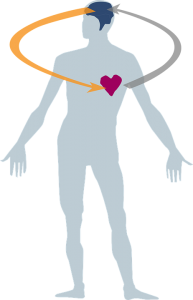Most people know that physical activity is important in obtaining optimal cardiovascular health. It also may not be surprising that a majority of Americans do not get the minimum recommended 75 vigorous-intensity minutes or 150 moderate intensity minutes per week of aerobic activity. Nor do they engage at least twice a week in muscle strengthening activities for major muscle groups.(1)
Studies have shown that an active life style can reduce cardiovascular disease by as much as 39% and stroke by 33%.(2) This risk reduction is due in part to exercise—which alters risk factors by lowering blood pressure, triglycerides and blood sugar, elevating HDL or good cholesterol, and reducing inflammatory markers, such as C-reactive protein, all of which are felt to be major contributors to vascular disease.
Brain Benefits
Exercise increases blood flow to the brain which aides in cognition, pain control and mood. It oxygenates the muscles to decrease fatigue, aids in skin health, increases bone density, and improves vision.
Engaging in a regular exercise program also allows for greater burning of fat cells, increases insulin sensitivity (reducing diabetes risk), and decreases risk of developing certain cancers. Studies have shown a 31% decrease in all-cause mortality for those doing the minimum recommended exercise.(3)
 Exercise as Medicine
Exercise as Medicine
There is increasing data pointing toward exercise as a potent “medicine” that improves both quality of life and duration of life. Physical activity appears to help promote growth of new neurons, and aids in repair and protection of cells from degeneration. In addition, it protects telomeres (which help prevent chromosome deterioration) from shortening, which slows aging at the cellular level.(4)
Enjoy Tennis or Racket Ball?
If you enjoy racket sports, there is especially good news. A recent study of 80,000 adults tracked for ten years showed that those who played racket sports had an overall lower all-cause and cardiovascular mortality rate when compared with those who participated in other forms of exercise.(5)
For those who don’t enjoy racket sports take heart–much of what we already do in our daily activities can count toward recommended daily exercise requirements. Even as little as 10 minutes of sustained activity is beneficial. Learn more from Harvard Medical School about various activities and the associated effects on calories burned.
Sick-be-gone Soup
For those times when you feel a cold or flu coming on, give this recipe I’ve come across a try. It just might put you back on the path to health!
Ingredients
- 1 whole garlic
- 1 medium onion
- 1 heaping Tbsp Miso paste
- 12 oz. mushrooms, thinly chopped
- Chives for garnish (optional)
Variation: for a creamy soup add 2 cups spinach or kale (for extra nutrients!) plus 1/2 can of cannellini beans
Preparation Steps
- Chop top off whole garlic
- Cut off top of onion and cut into “blooming onion” (slice vertically in 16 segments, then separate sections as if opening a flower)
- Bake both whole garlic and onion for 20 minutes at 400 degrees
- In 4qt soup pot, add 2.5 quarts water, roasted garlic (squeeze garlic out of skin), onion, and miso
- Cook 10 minutes then use immersion blender to blend completely
- Add mushrooms and cook another 10 minutes
- For a creamy soup, add spinach or kale and cannellini beans. Blend soup until mixed thoroughly.


